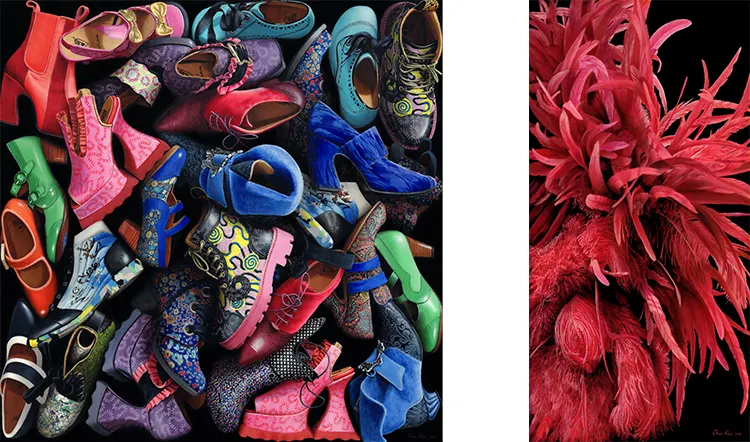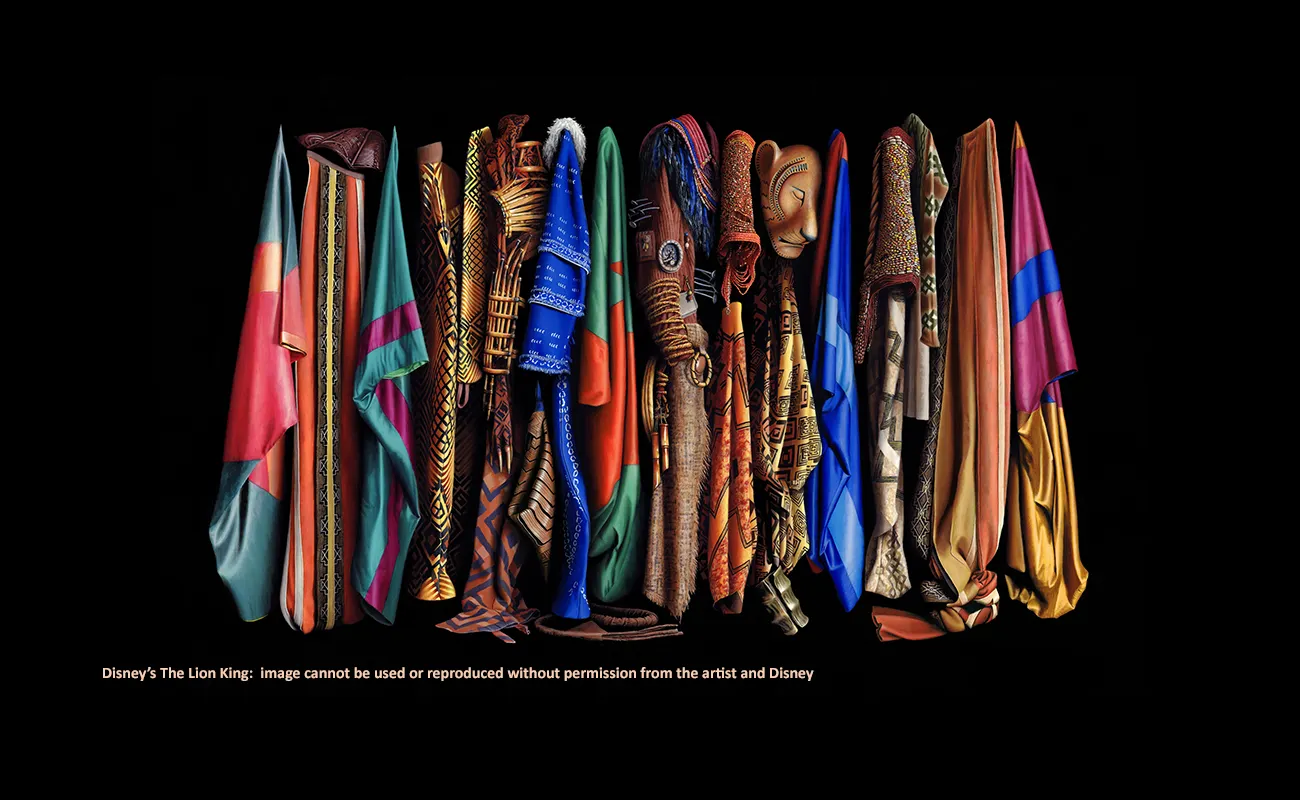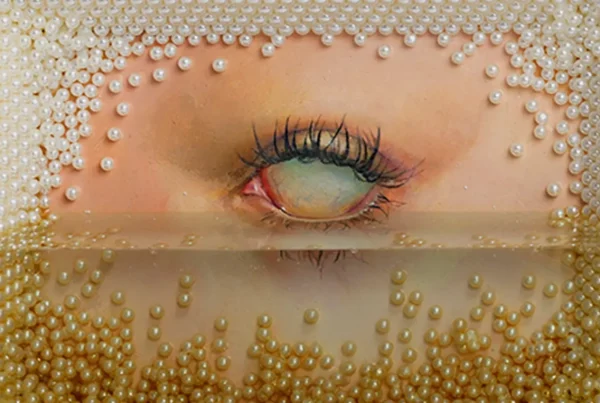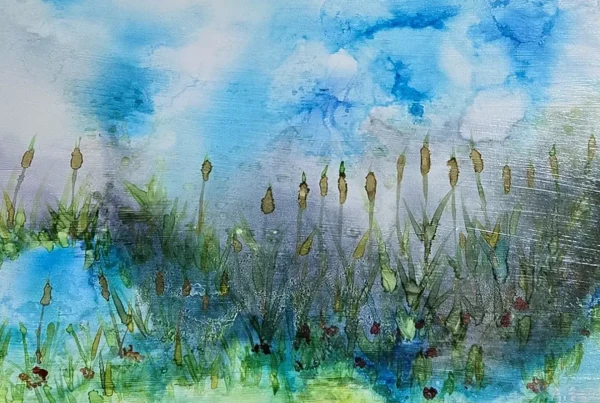“I thought I might create 4 or 5 costume paintings—so far, I must have painted over 100, and still, I haven’t stopped!”
From Cars to Canvas: A Journey of Artistic Discovery
Chris Klein’s artistic path has been anything but conventional. While he always identified as an artist, for much of his early life, painting remained more of a passion than a profession. His career initially revolved around the motor trade, where he worked in after-sales for various automobile brands, ranging from manufacturers like Ford and Citroën to luxury names such as Porsche and Maserati. Through these roles, Klein forged connections with racing drivers and car collectors, leading him to create paintings of classic and high-performance vehicles. Some of these works bore the signatures of the teams behind the cars, and his talent even earned him an invitation to the home of legendary Formula One driver Sir Stirling Moss.
His transition into professional artistry gained momentum when he found work as a scenic artist in theatre and film. This shift not only provided him with a stable income through painting but also expanded his creative boundaries. Unlike traditional artwork meant for longevity, scenic pieces in film were designed for temporary use, often discarded after a scene was shot. This impermanence encouraged Klein to experiment, freeing him from the constraints of meticulous detail and allowing for a more expressive, abstract approach. The influence of this experience remains evident in his later works, where a balance between precision and fluidity defines his style.
Relocating to Canada brought new opportunities, both personally and professionally. Settling in Montreal after marrying his wife, Linda, he quickly found work in the city’s thriving film industry, contributing to the sets of Hollywood productions. Theatre remained a part of his life, including projects for Cirque du Soleil. However, as his family life took priority, his personal artwork was momentarily placed on hold. It wasn’t until he accepted the role of Head of Scenic Art at the Stratford Festival—North America’s largest classical theatre festival—that his journey as an independent artist truly took off.
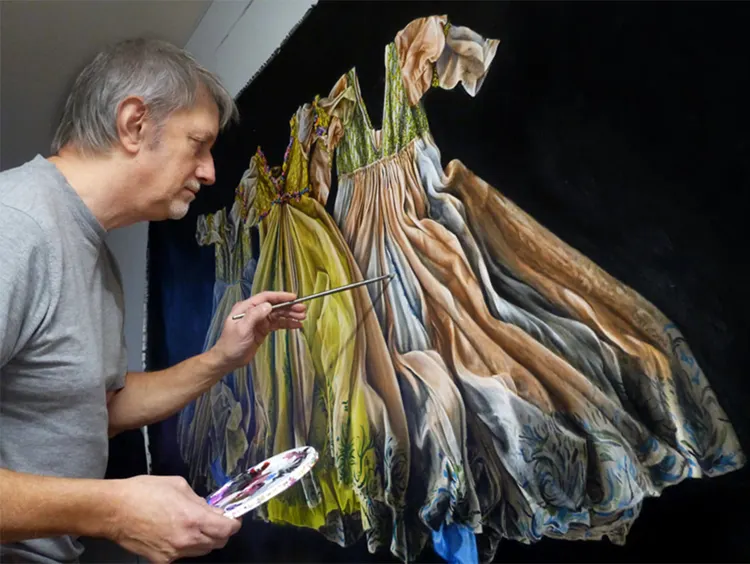
Chris Klein: The Costumes That Transformed a Career
The Stratford Festival houses one of the most extensive collections of theatrical costumes in Canada, and Klein’s workshop was positioned right next to this treasure trove. Walking past the racks of elaborate garments daily, he often stopped to admire them, capturing countless photographs. It wasn’t long before he felt compelled to paint these intricate designs, believing they deserved to be immortalized on canvas. Initially envisioning only a handful of pieces, he quickly realized the depth of inspiration they provided. Over the years, his costume series has grown to over a hundred paintings, with no signs of slowing down.
At first, Klein’s works found an audience in Montreal, but when Stratford’s Agora Gallery expressed interest, it marked a turning point in his career. His paintings resonated strongly with collectors, leading to a solo exhibition and an increase in demand. Sales surged, and as his reputation expanded, he found representation in Montreal and Toronto, winning art competitions that further elevated his profile. Invitations to showcase his work followed, extending his reach to Miami, New York, and even Lisbon.
The momentum was strong enough for him to leave his position at the Stratford Festival, opting for a part-time role at the National Arts Centre in Ottawa to focus more on painting. However, even that proved too limiting, and Klein eventually transitioned to full-time artistry. A defining moment came when a prestigious New York gallery reached out to represent him, introducing his work to a broader international audience. Though the gallery later closed due to the owner’s health issues, the exposure had already propelled Klein’s art to new heights, solidifying his place in the high-end art market.
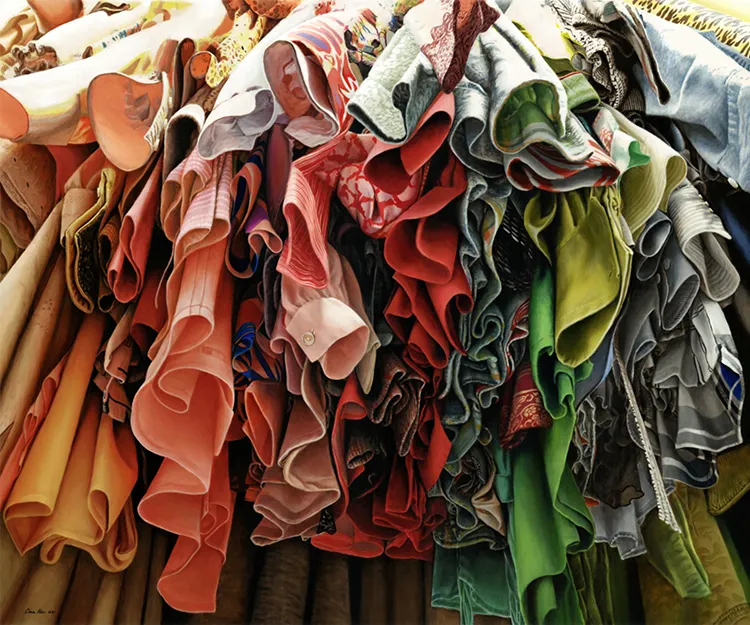
Theatrical Realism and Salvaged Beauty
Although Klein resists being confined to a single artistic label, his work is most commonly associated with realism, often bordering on hyperrealism. His extensive body of work includes landscapes, figurative pieces, and abstract compositions, but it is his theatre-inspired costume paintings that have defined his career for the past 15 years. Despite their prominence, another recurring theme in his art is the depiction of salvaged objects—wrecked cars, discarded materials, and industrial remnants. Though these works have taken a back seat due to the overwhelming demand for his costume paintings, they remain a passion of his, showcasing his ability to find beauty in decay.
His approach to costume painting has evolved over time. Initially, he aimed for a looser, almost impressionistic style when viewed up close. However, as he gained representation from galleries specializing in realism, his work became more refined and meticulously detailed while still retaining a certain painterly quality upon closer inspection. His subjects have expanded beyond theatre, delving into historical museum collections and even royal ceremonial attire, including pieces archived at Kensington Palace. Additionally, his work now incorporates elements of fashion and pop culture, demonstrating his adaptability and ever-expanding artistic vision.
Klein’s influences are deeply rooted in the dramatic use of light and shadow, a hallmark of artists such as Caravaggio and Joseph Wright of Derby. Growing up in London, he frequently visited the National Gallery, where he would spend hours studying masterpieces like An Experiment on a Bird in the Air Pump and Supper at Emmaus. The way these paintings seemed to emerge from the canvas through lighting techniques captivated him, a fascination that continues to shape his own artistic practice. Whenever he returns to London, revisiting these works remains a source of inspiration.
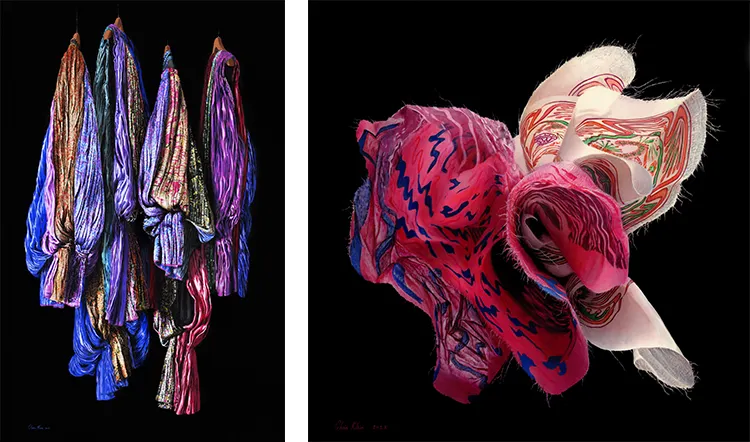
Chris Klein: The Art of Iconic Stage and Fashion Legends
One of Klein’s most significant projects involved painting costumes from The Phantom of the Opera, a process that required more than a year of negotiations to secure the necessary permissions. His persistence paid off, leading to a solo exhibition in New York’s Chelsea district, where a chance encounter opened another extraordinary door. A connection from Andrew Lloyd Webber’s Really Useful Group attended his exhibition and suggested he paint costumes from The Lion King. While initially dismissing the idea as improbable due to the complexities of securing rights, Klein was soon introduced to Tom Schumacher, President of Disney Theatrical.
Schumacher, impressed by Klein’s work, saw an opportunity to incorporate his paintings into the celebration of The Lion King’s 20th anniversary in London. Soon after, Klein received an invitation to contribute to Disney’s Behind the Curtain brochure, a milestone that he only fully grasped when he visited their New York headquarters and saw his artwork featured prominently on the cover. The experience culminated in attending the London anniversary, where his work became part of the grand celebration. The original painting now resides in Disney’s headquarters, marking a rare artistic tribute to the long-running production.
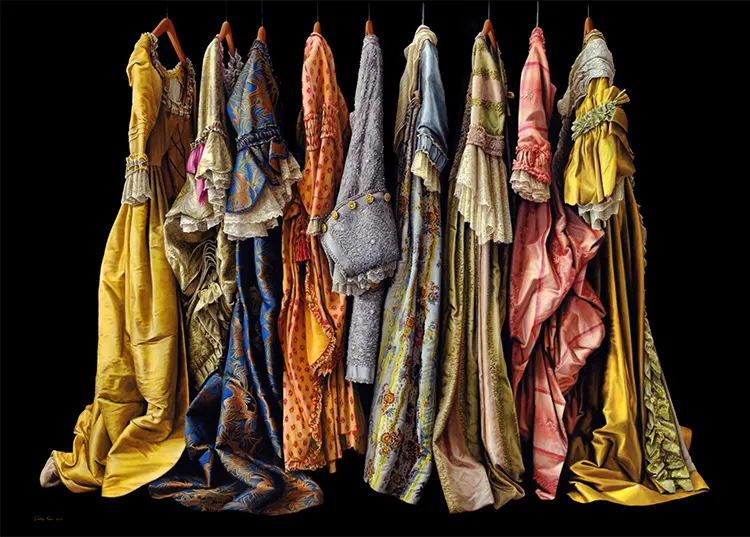
More recently, Klein has embarked on an exciting collaboration with legendary fashion designer Dame Zandra Rhodes. Renowned for dressing icons like Princess Diana, Diana Ross, and Freddie Mercury, Rhodes granted Klein access to her extensive archives, allowing him to paint from her collections freely. His fascination with Freddie Mercury’s flamboyant stage outfits led him to another ambitious project—documenting Queen’s historic wardrobe.
Through Anne Brummer, co-founder of Brian May’s Save Me Trust, Klein gained access to the guitarist’s personal collection of stage costumes, as well as a few pieces once worn by Mercury. Recognizing the significance of this project, he proposed donating a portion of painting sales to the Save Me Trust, an idea that May and Brummer fully supported. The process required extensive legal permissions, but after overcoming these hurdles, Klein began bringing these legendary costumes to life on canvas. With two completed paintings and more in progress, this ongoing series stands as one of his most meaningful endeavors, blending rock history with his distinctive artistic style.
Chris Klein’s artistic evolution, from motor trade to scenic artistry to globally recognized painter, reflects an unyielding passion for storytelling through visual form. Whether capturing the grandeur of theatrical costumes or the haunting allure of discarded machinery, his work continues to captivate audiences worldwide, proving that art, much like the subjects he paints, can be both timeless and transformative.
